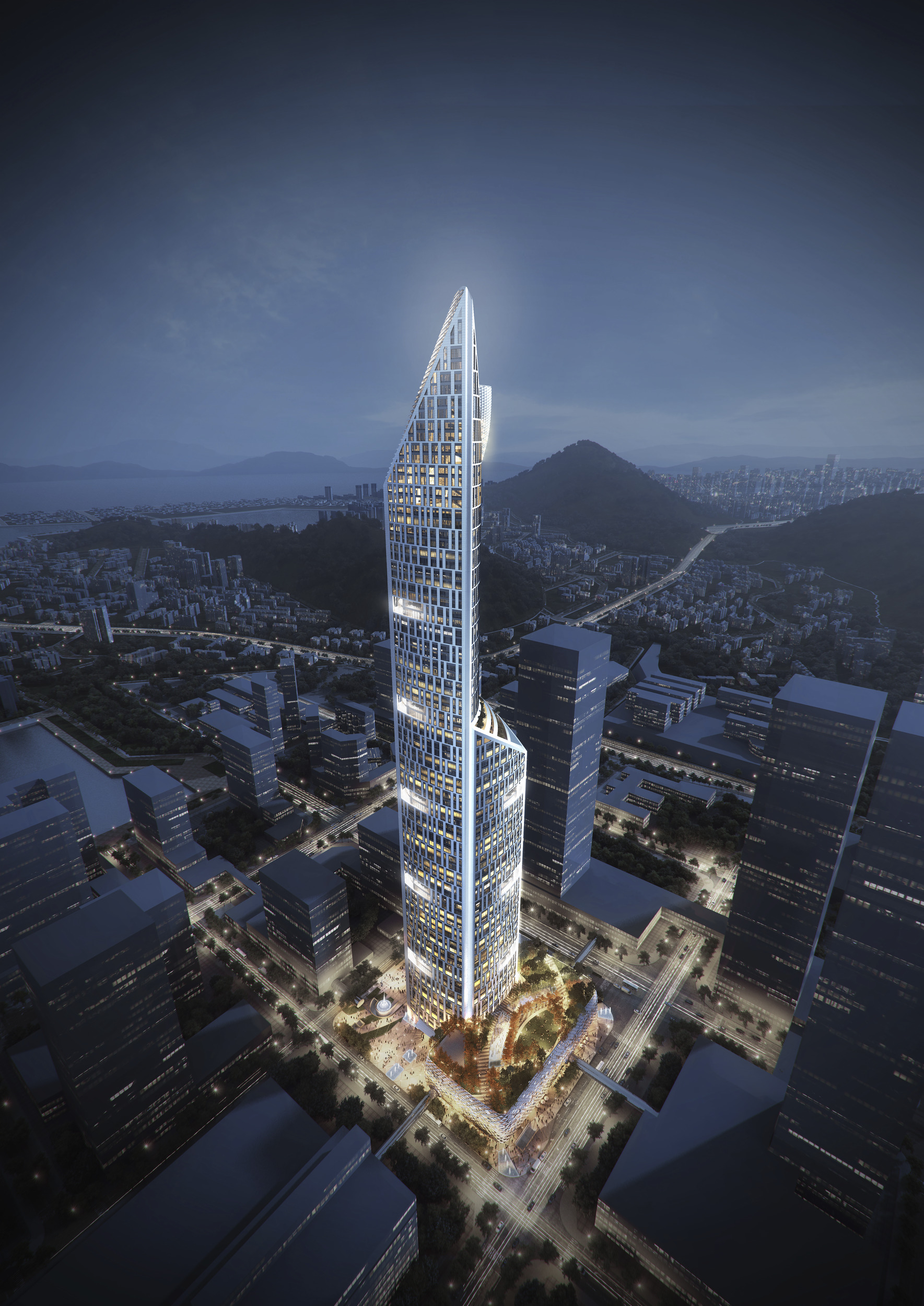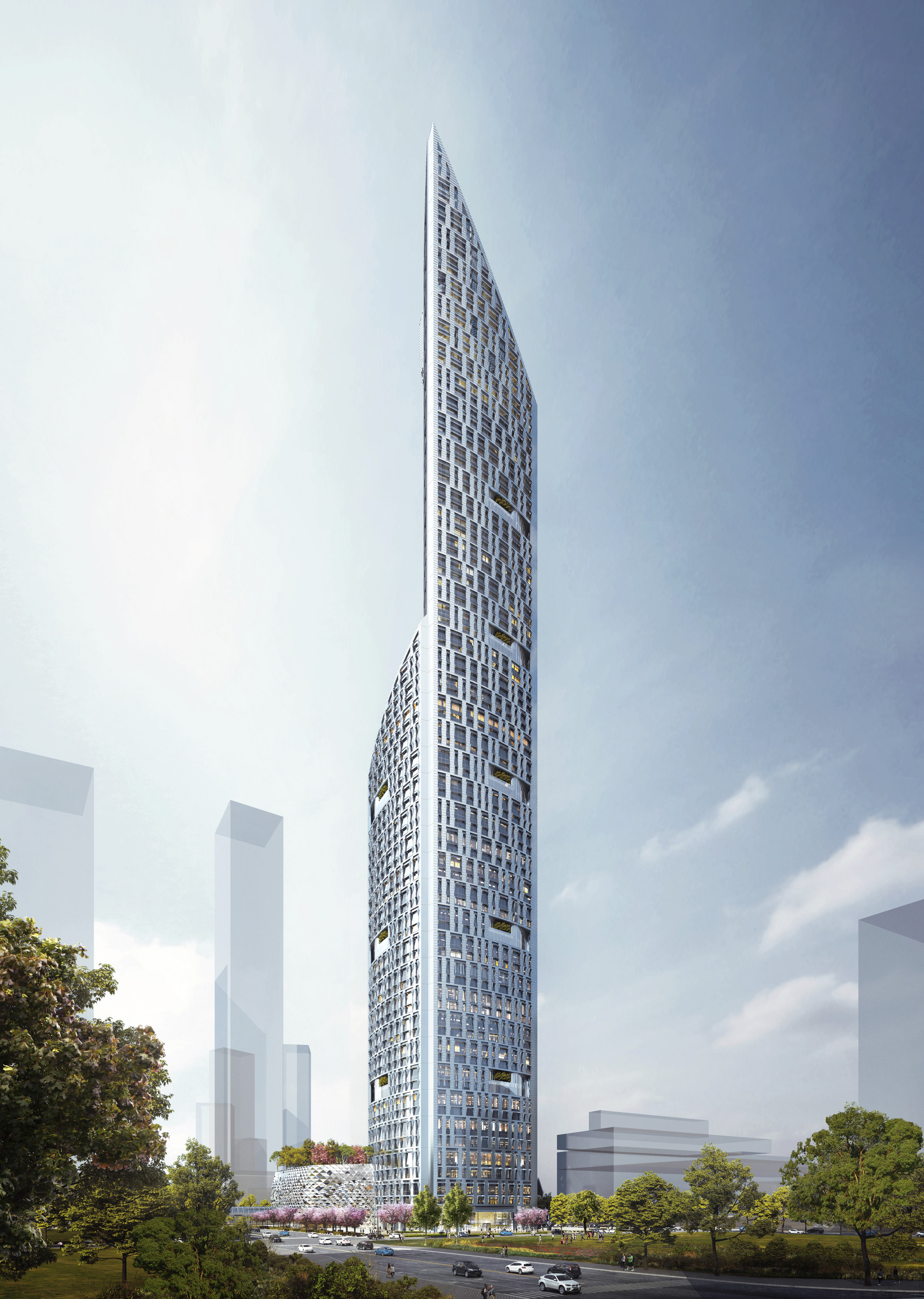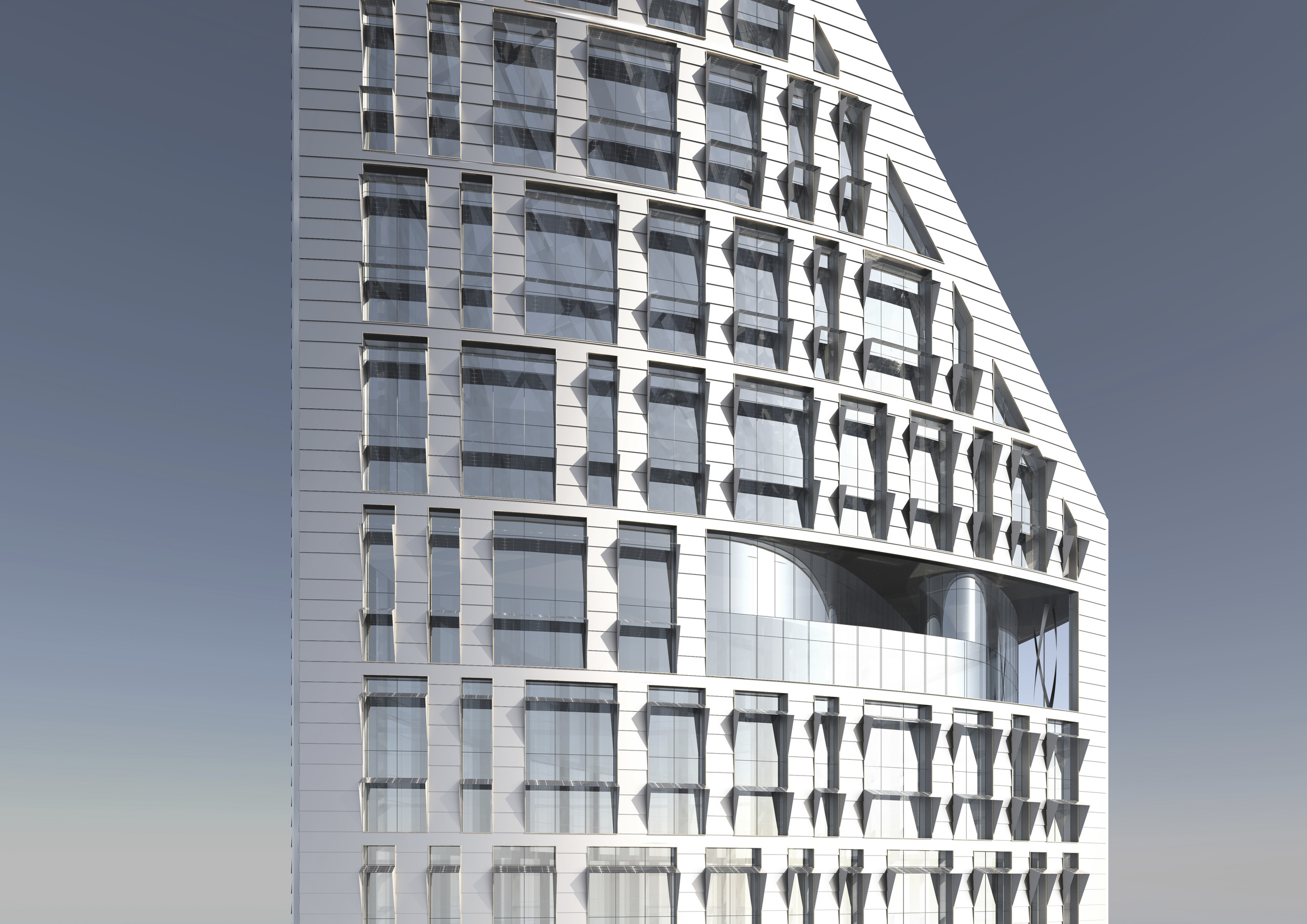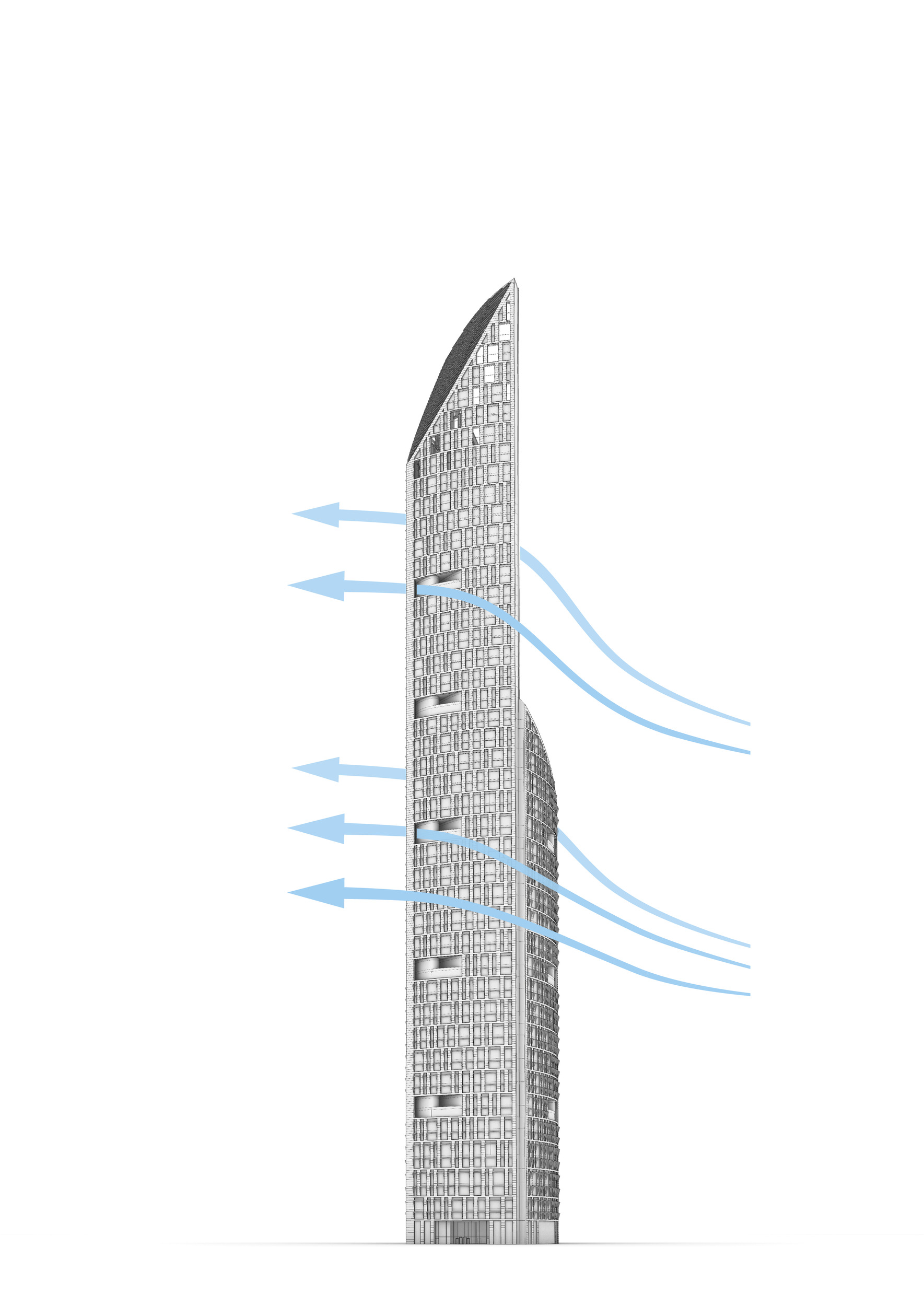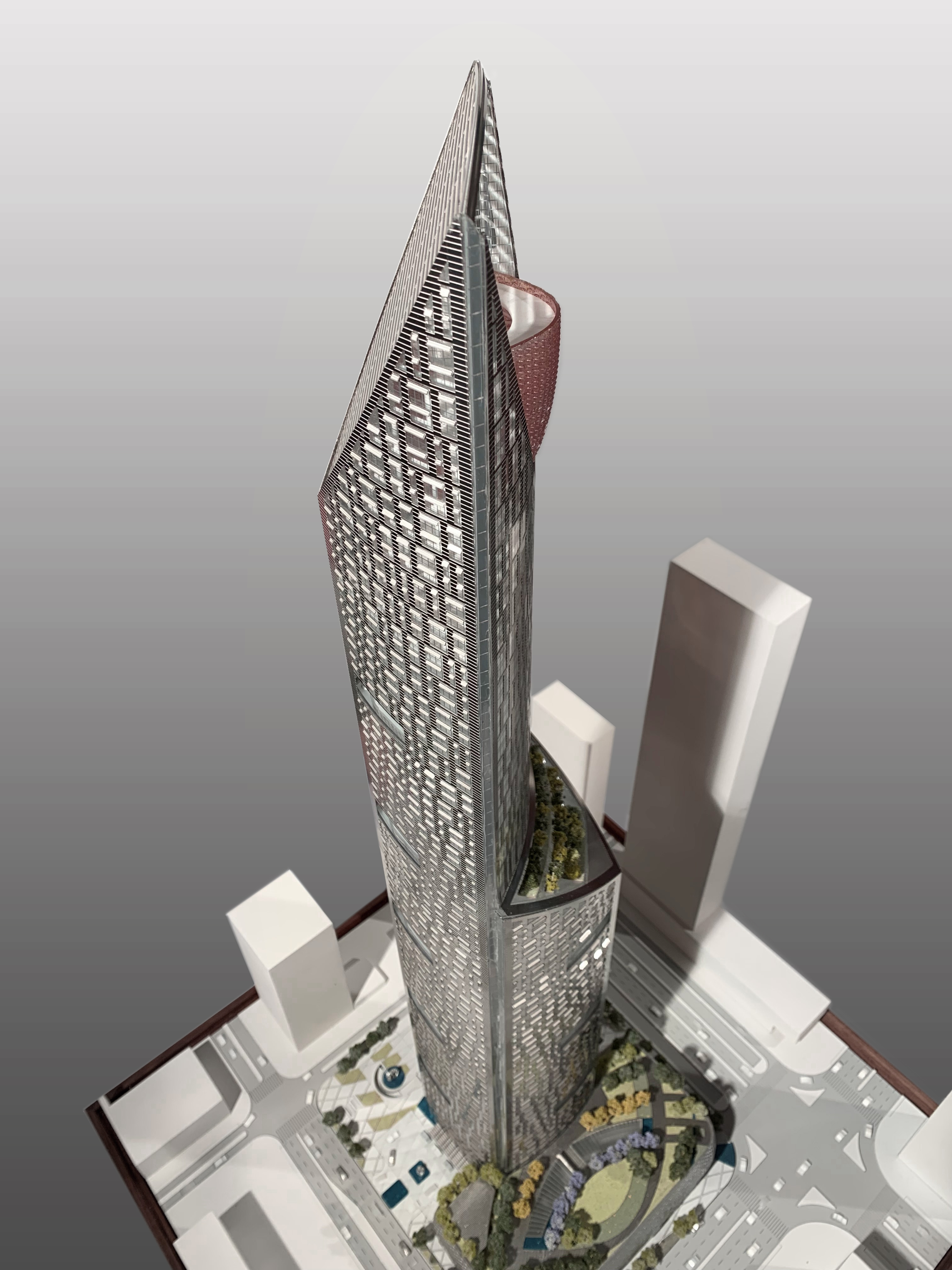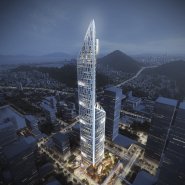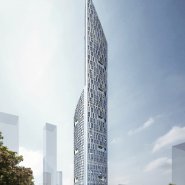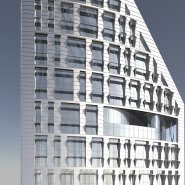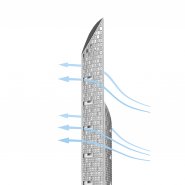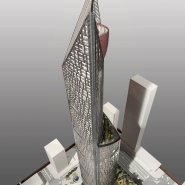Shenzhen Bayview Tower was designed as a high-performance environmentally responsive building that was shaped and optimized to protect from and take advantage of the local environmental conditions. The building seamlessly integrates modern intelligent building technologies with passive sustainable solutions.
The profile and silhouette of the building draws inspiration from the undulating natural forms of the surrounding Nanshan Mountains and the Shenzhen Bay. Both the mountains and the water are important symbols and physical characteristics of the Shenzhen landscape. By borrowing inspiration from these natural forms, the building creates a direct relationship to its context and becomes an architectural manifestation. From across the bay, the tower appears as a new peak located between the water and the mountains and a beacon of light that anchors the entrance into the bay.
The form of the tower was developed using a holistic approach to the notion of efficiency. This means that the building efficiency is not solely measured in its floor plate, but also in its structure and environmental system performance. By combining efficiency and comfort with the aerodynamic form, the building is more cost effective, user friendly, and easier to maintain.
A preliminary analysis indicated that reducing the mass of the top of the building by stepping back the form is more effective at mitigating the wind loads then tapering the building. To further reduce the wind forces, wind slots are incorporated into the massing of the building. These wind force reductions minimize the amount of structural material (and the associated embodied carbon) that are needed for construction. The combination of these form optimizations gives the building its distinct and iconic form.
Another major component to the design of the building’s façade are the retractable awnings that shade the building from direct sunlight, while generating electricity from their integrated photovoltaic panels. These high-performance awnings are automatically deployed throughout the building as the sun moves across the sky. They are connected to the building’s management system and foldaway into each bay when they are no longer needed or in case of extreme weather. The design draws inspiration from traditional awnings that have adorned buildings in sub-tropical and tropical regions for generations. Being able to control the amount of sunlight that can enter a building, while creating shade are two very important passive design strategies.
The architectural design integrates a sustainable design philosophy with aesthetics and commercial efficiency. The core guiding principles are cooperation, health, culture, transparency, and sustainability.
Sustainable goals include:
- High Performing: A high performing environmentally, socially, and economical building
- Energy Efficient: A Regional benchmark for uncompromising energy efficiency
- Power Generating: A building that generates a significant proportion of its own electricity
- Resilient: A building that is resilient to climate change
- Adaptable: A building that is adaptable to the future and can change with the demands of the real estate sector
- Net Zero Water: A building with Net Zero Water consumption
- Flexible: An efficient and flexible building that promotes the ability for spaces to easily be changed and adapt to user behavior and needs
- Wellness: A building that is designed to enhance the health and wellness of its occupants
